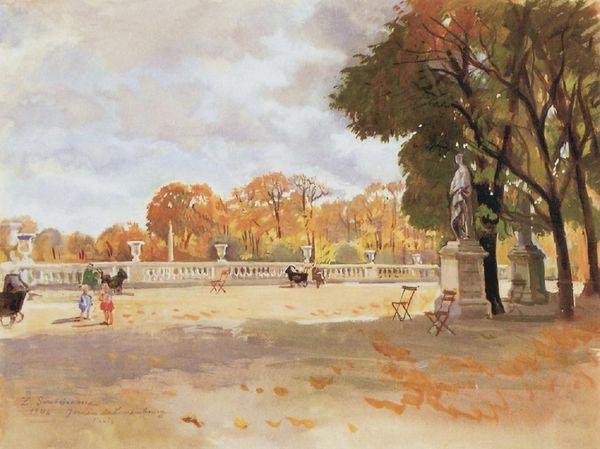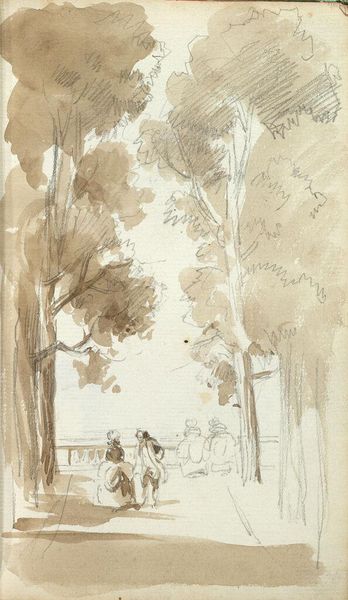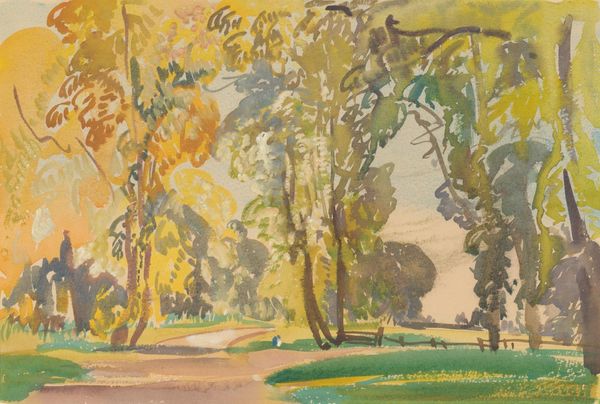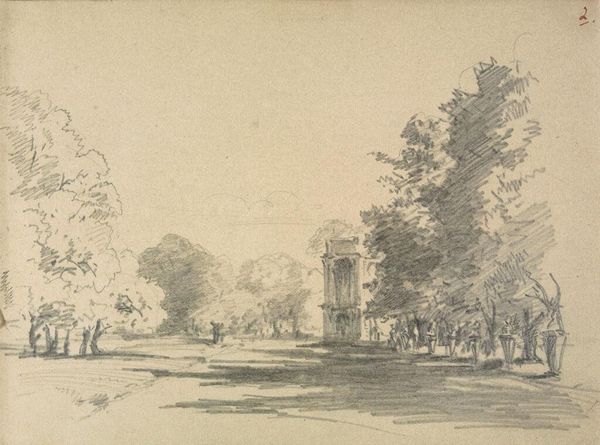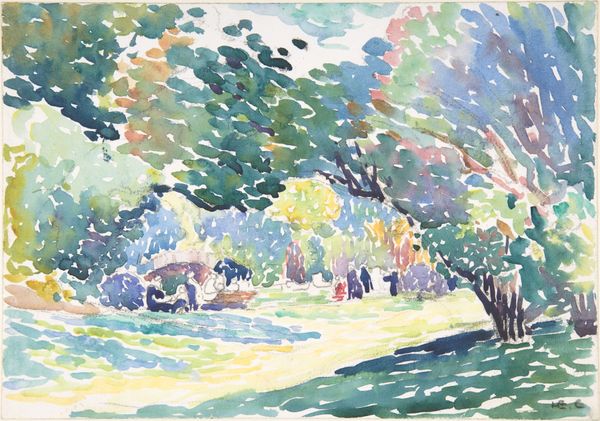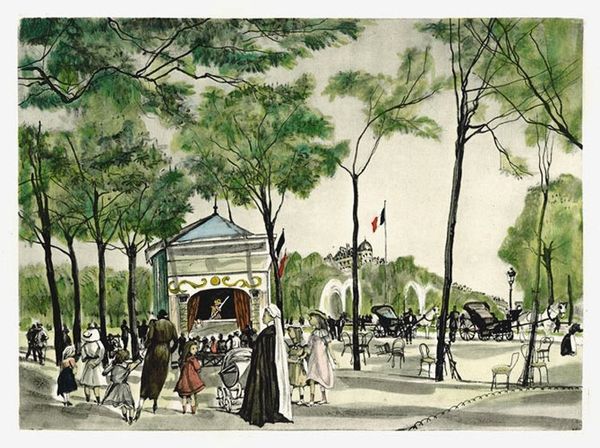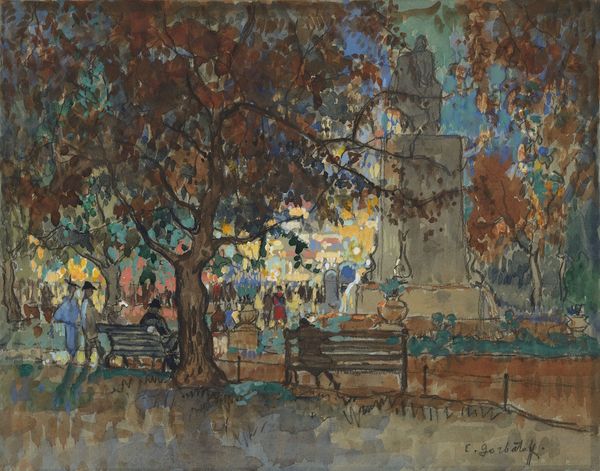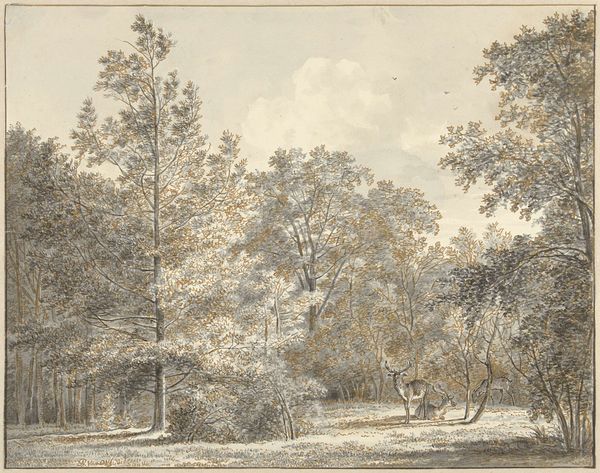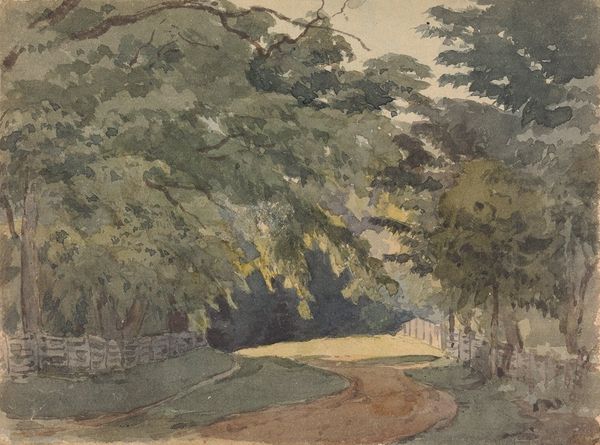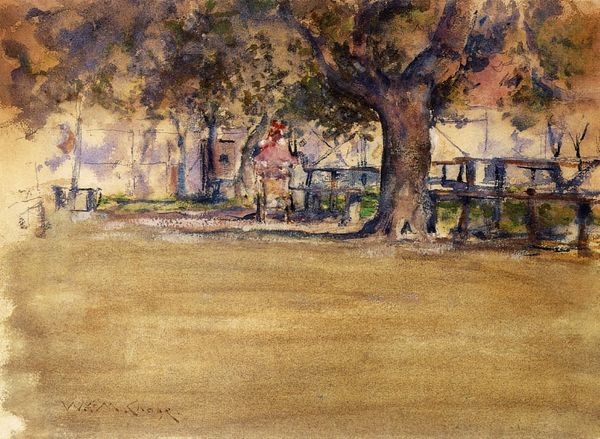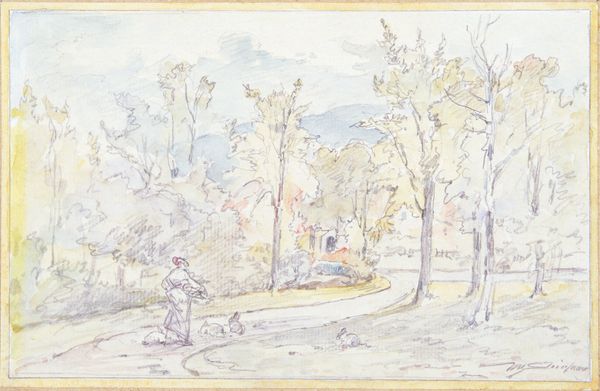
Copyright: Public Domain: Artvee
Frédéric Houbron created this watercolor painting of a Parisian public garden in 1899. The quick, fluid washes of paint are typical of the watercolor medium, where pigments suspended in water are applied to paper, creating translucent layers. The artist's technique is economical, almost journalistic. This contrasts with the scene depicted, which hints at the leisurely social life of the Parisian bourgeoisie. Consider the amount of labor that underpins this carefree existence. The clothing of the figures, for instance, was likely produced through extensive work in the textile and garment industries. The public garden itself, an example of urban design, was the result of careful planning and maintenance. Houbron's painting style, with its emphasis on immediacy and lightness, reflects the consumer culture of his time. It serves as a reminder of the interconnectedness between art, labor, and social life in turn-of-the-century Paris.
Comments
No comments
Be the first to comment and join the conversation on the ultimate creative platform.
